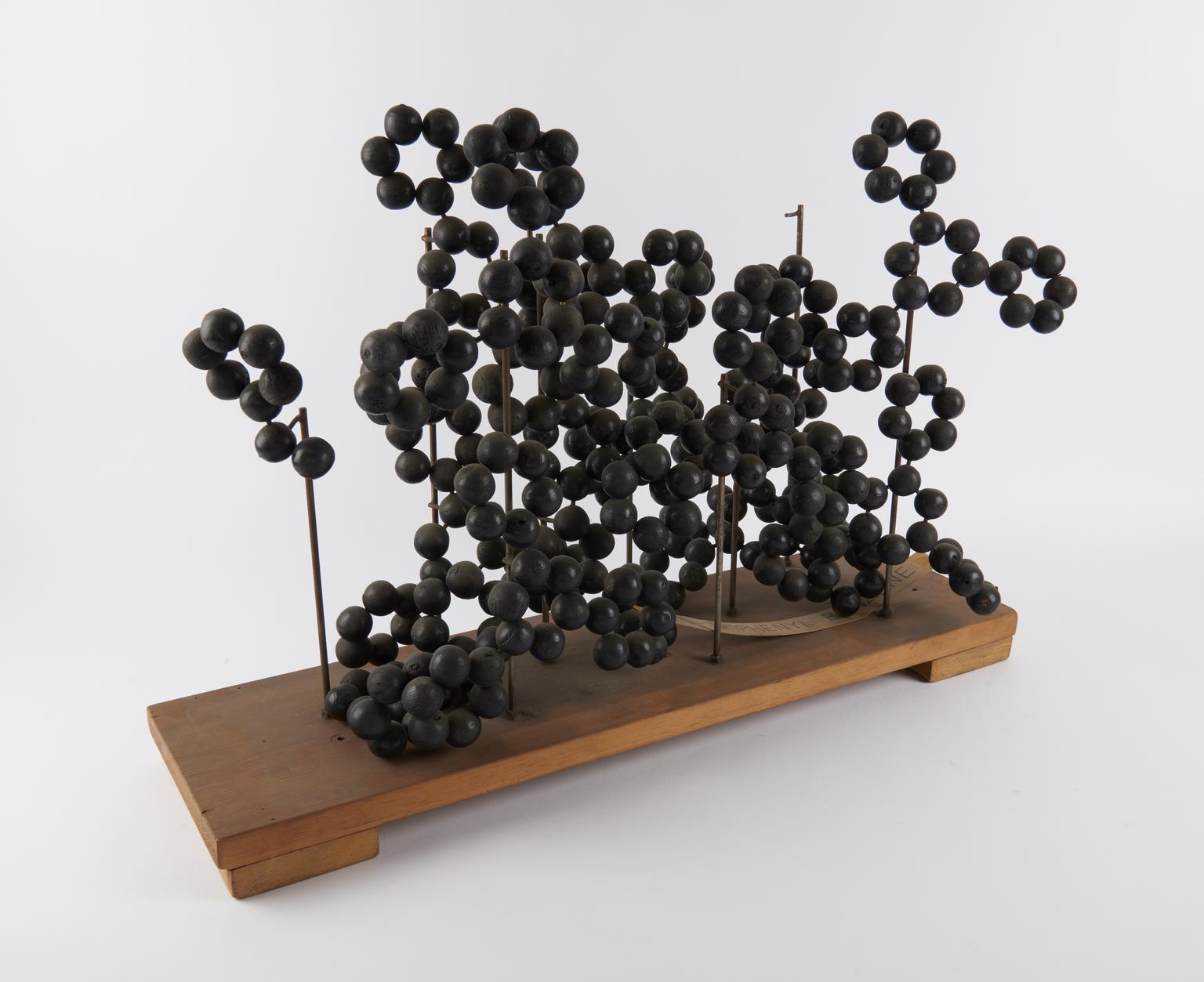
Crystal model of 1.3.5 triphenylbenzene
One crystal model of 1.3.5 triphenylbenzene. From a collection relating to the X-ray crystallography research carried out by Dame Kathleen Lonsdale at University College London.
Group of 15 crystal models made by or given to Kathleen Lonsdale. NB: Those made by Lonsdale’s technician, Eric Nave, have balls with slightly straight edges, as they were made from broom handles. The models gifted to Lonsdale came from David Cray, Professor of Chemistry at UCL and T Whittet of University College Hospital.
From a collection relating to the X-ray crystallography research carried out by Dame Kathleen Lonsdale at University College London.

One crystal model of 1.3.5 triphenylbenzene. From a collection relating to the X-ray crystallography research carried out by Dame Kathleen Lonsdale at University College London.
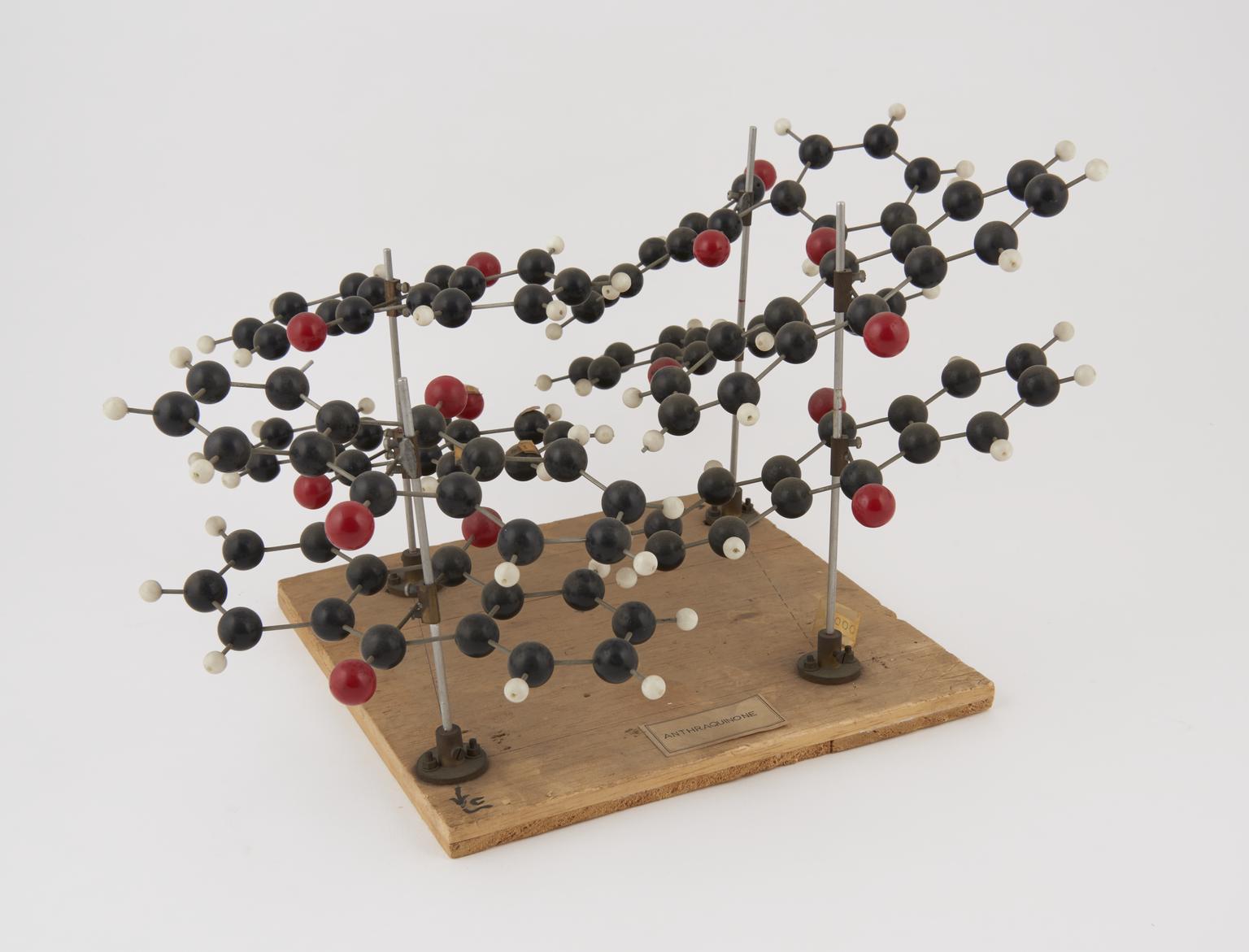
One crystal model of anthraquinone; used in conjunction with 1993-421/4/12 to demonstrate the solid state transformation from anthroquinone (1 bar) to anthrone (not 1 bar), ends with members of different molecule system. This was the last project undertaken, the results of which were published in a Phil Trans paper.
From a collection relating to the X-ray crystallography research carried out by Dame Kathleen Lonsdale at University College London.

One crystal model of photo-oxide anthracene. From a collection relating to the X-ray crystallography research carried out by Dame Kathleen Lonsdale at University College London.

One crystal model of benzil. Benzil was of particular interest due to its large amount of diffuse scattering and disorder. From a collection relating to the X-ray crystallography research carried out by Dame Kathleen Lonsdale at University College London.

One crystal model of a solid state transformation demonstration. From a collection relating to the X-ray crystallography research carried out by Dame Kathleen Lonsdale at University College London.
Five teaching models made from ping pong balls showing silicate groups, with six descriptions handwritten onto X-ray film, by Dame Kathleen Lonsdale, University College London, London, England, 1930-1970
Teaching model made from ping pong balls showing silicate group, Si6 O18, made by Dame Kathleen Lonsdale, University College London, London, England, 1940-1950
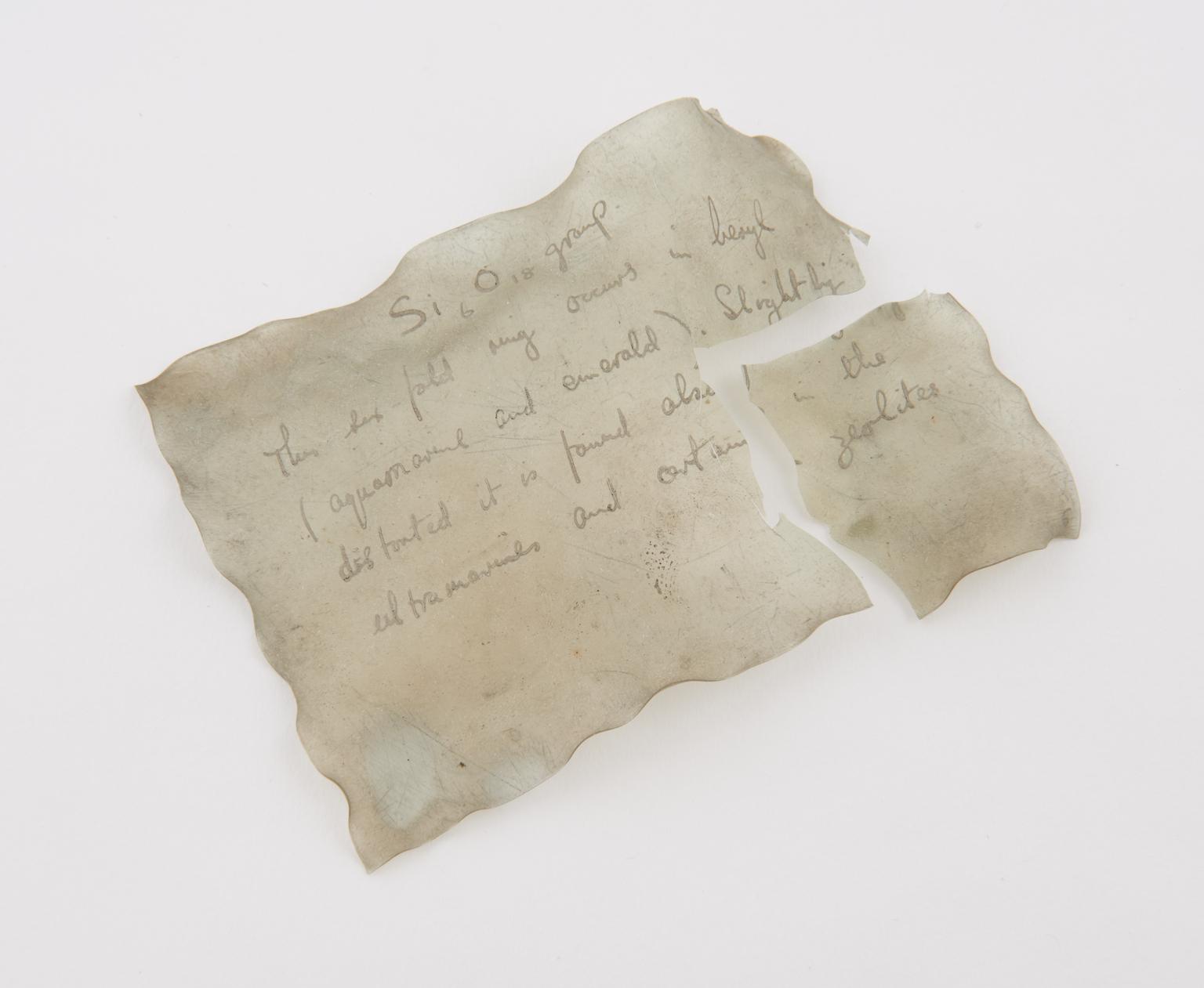
Handwritten description for silicate group Si6 O18 on x-ray film in 2 pieces, made by Dame Kathleen Lonsdale, University College London, London, England, 1940-1950
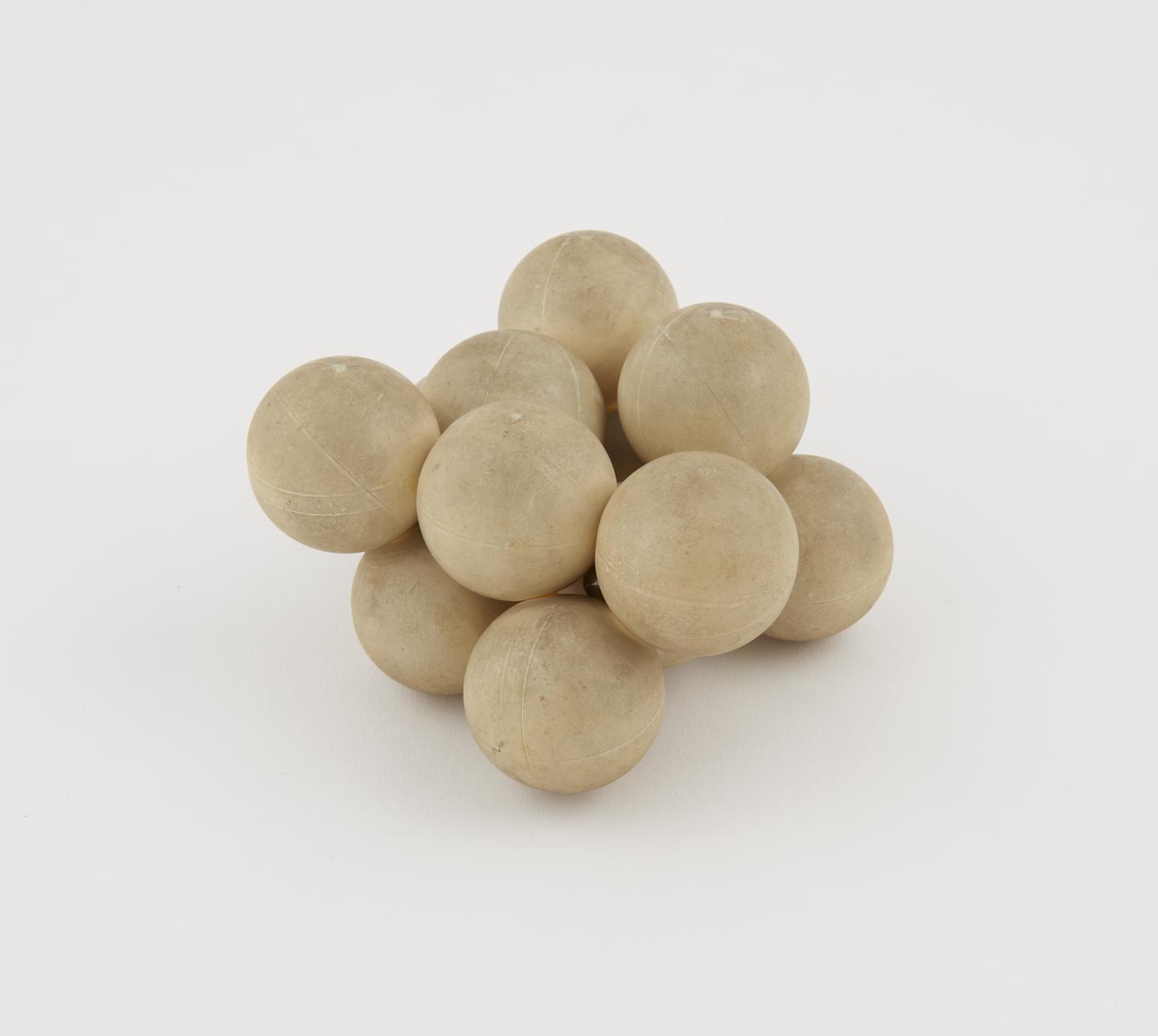
Teaching model made from ping pong balls showing silicate group, Si4 O12, made by Dame Kathleen Lonsdale, University College London, London, England, 1940-1950
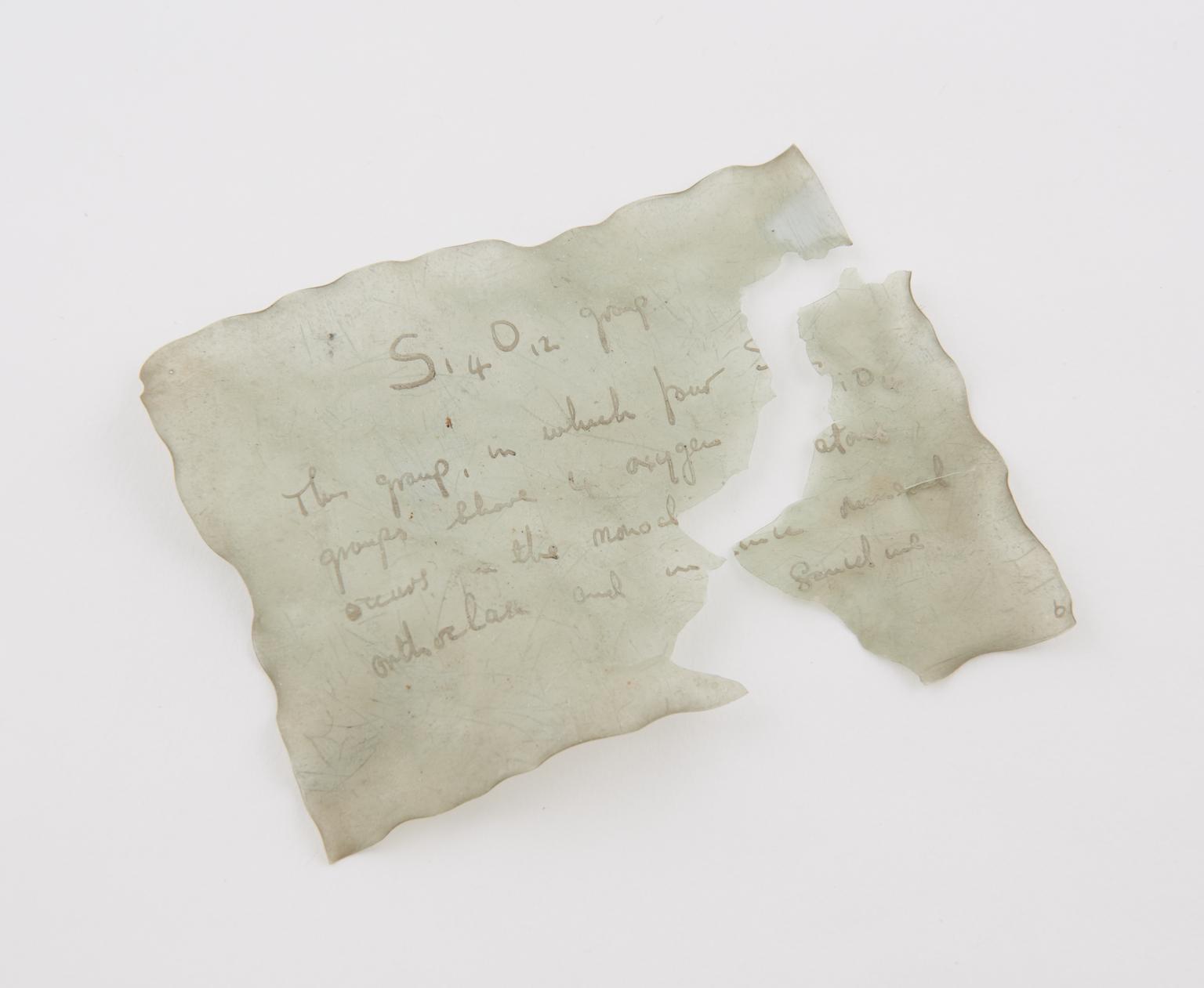
Handwritten description for silicate group Si4 O12 on x-ray film in 2 pieces, made by Dame Kathleen Lonsdale, University College London, London, England, 1940-1950
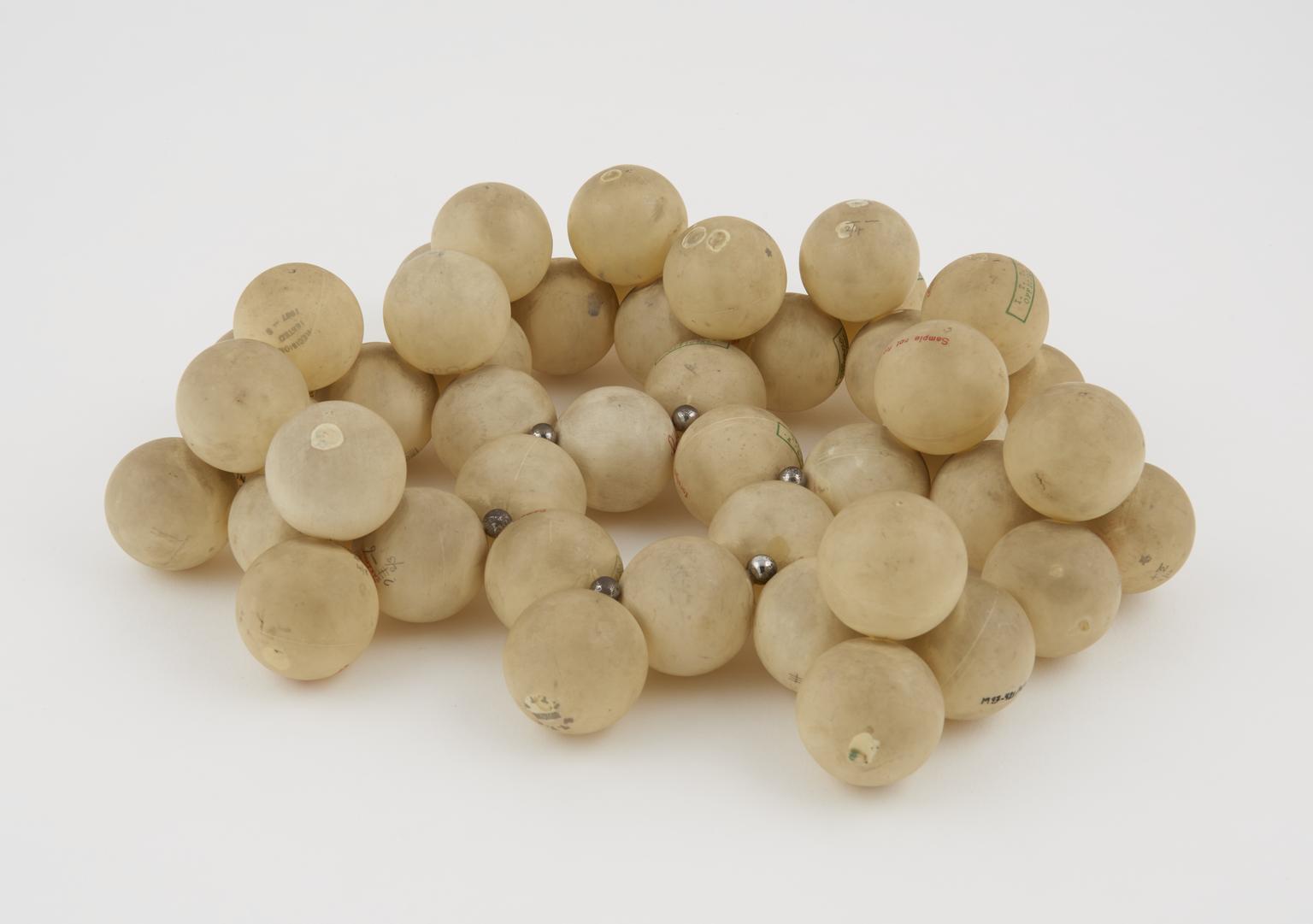
Teaching model made from ping pong balls showing silicate group Si2 O5, made by Dame Kathleen Lonsdale, University College London, London, England, 1940-1950
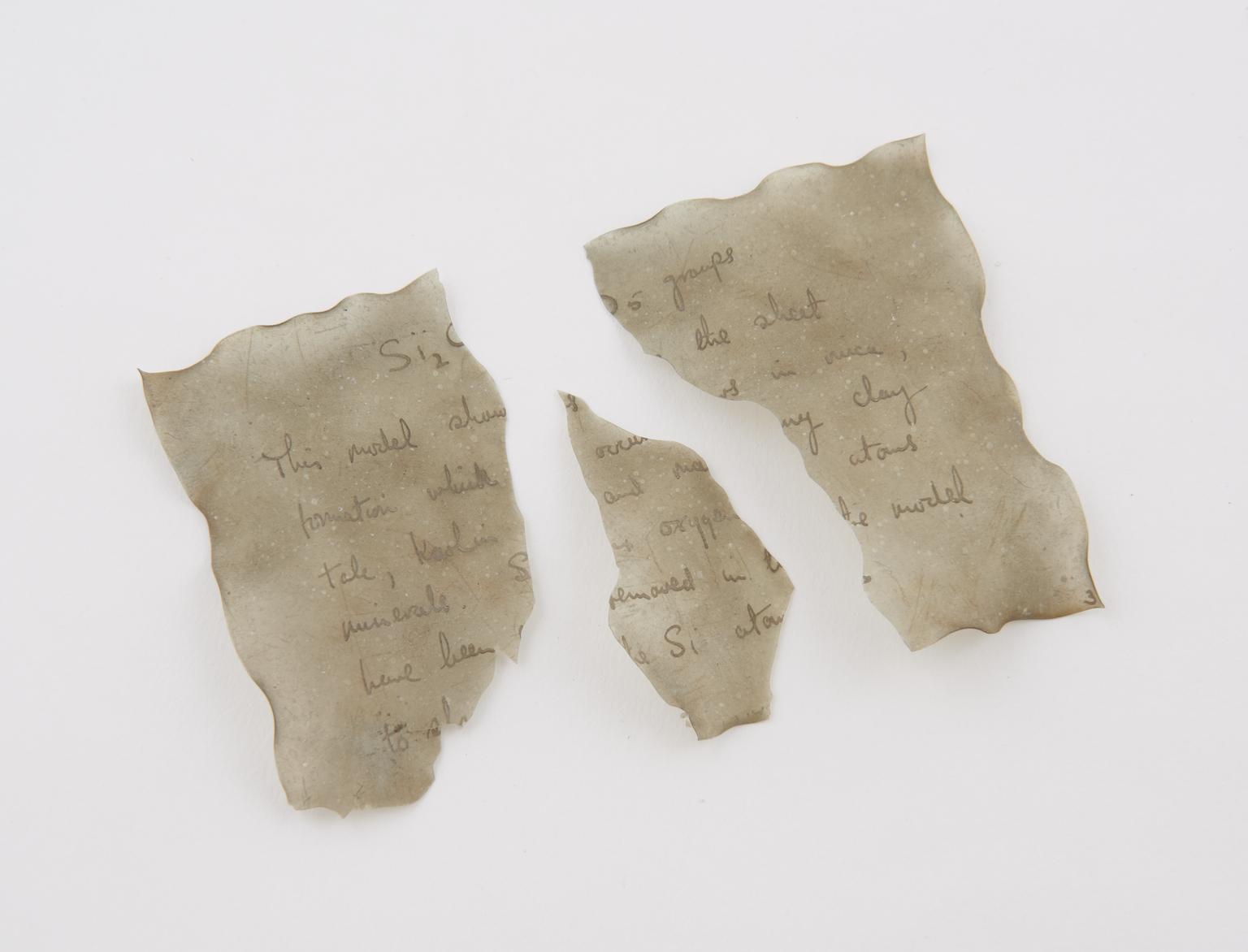
Handwritten description for silicate group, Si2 O5, on x-ray film in 4 pieces, made by Dame Kathleen Lonsdale, University College London, London, England, 1940-1950
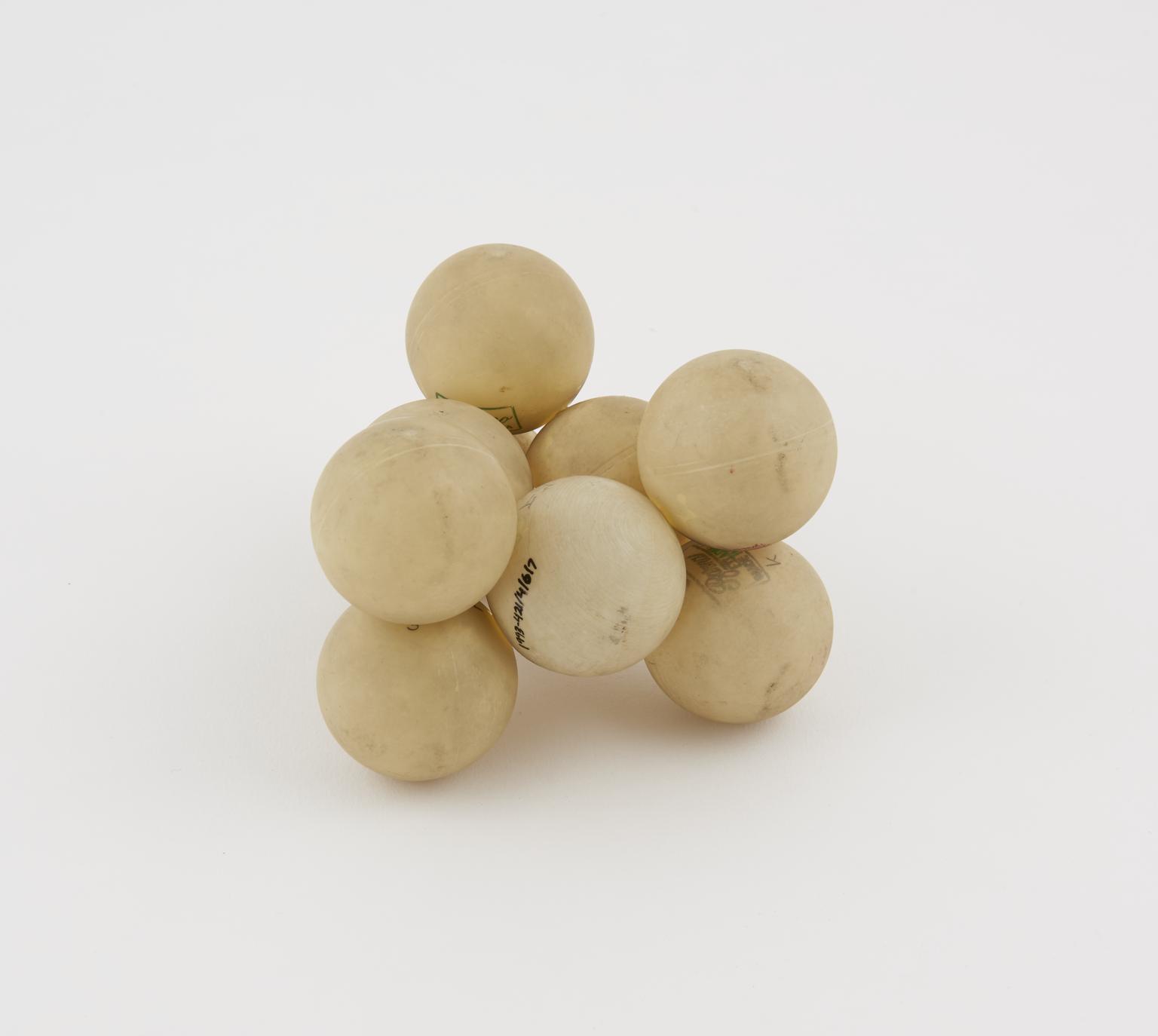
Teaching model made from ping pong balls showing silicate group Si3 O4, made by Dame Kathleen Lonsdale, University College London, London, England, 1940-1950
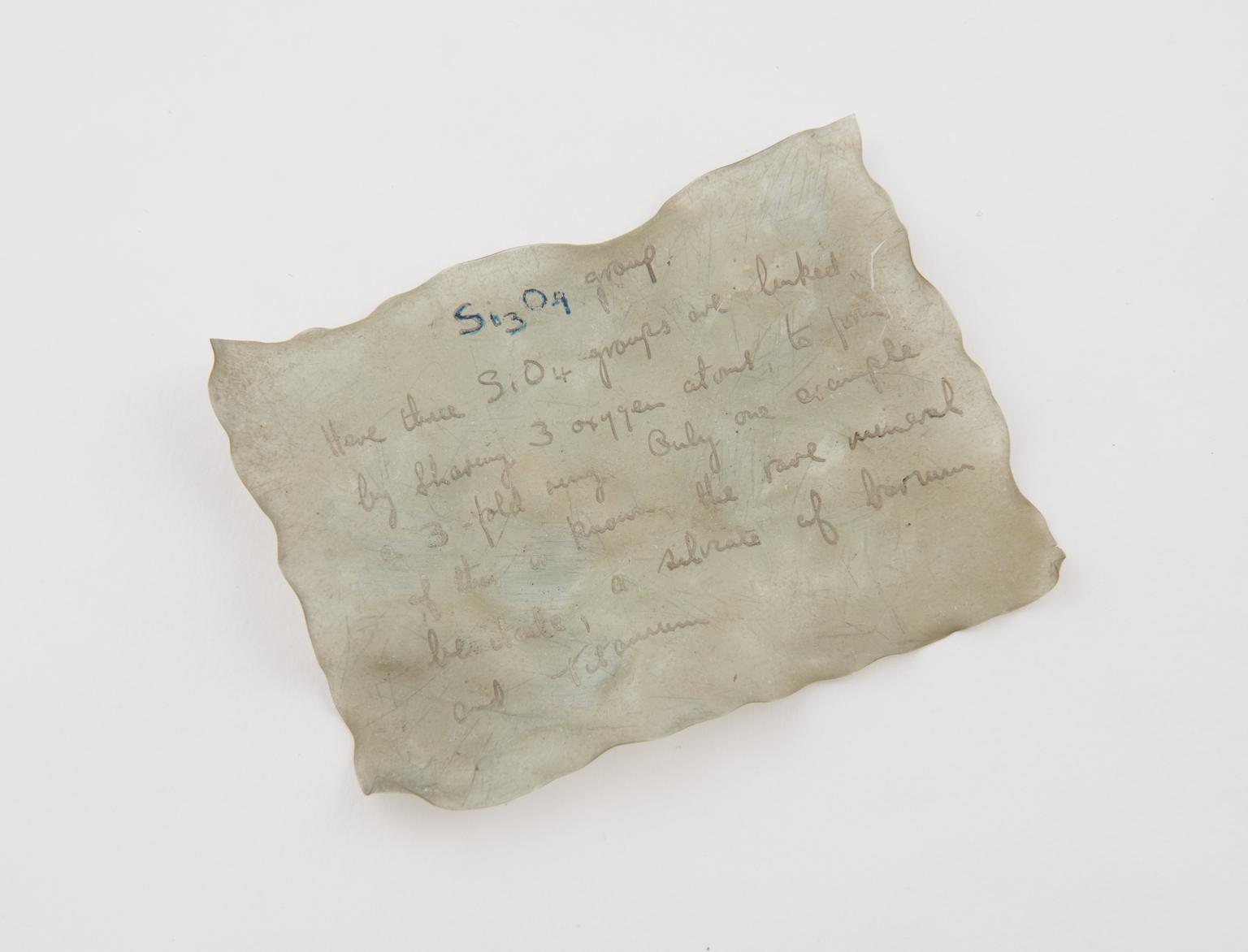
Handwritten description for silicate group, Si3 O4, on x-ray film, made by Dame Kathleen Lonsdale, University College London, London, England, 1940-1950
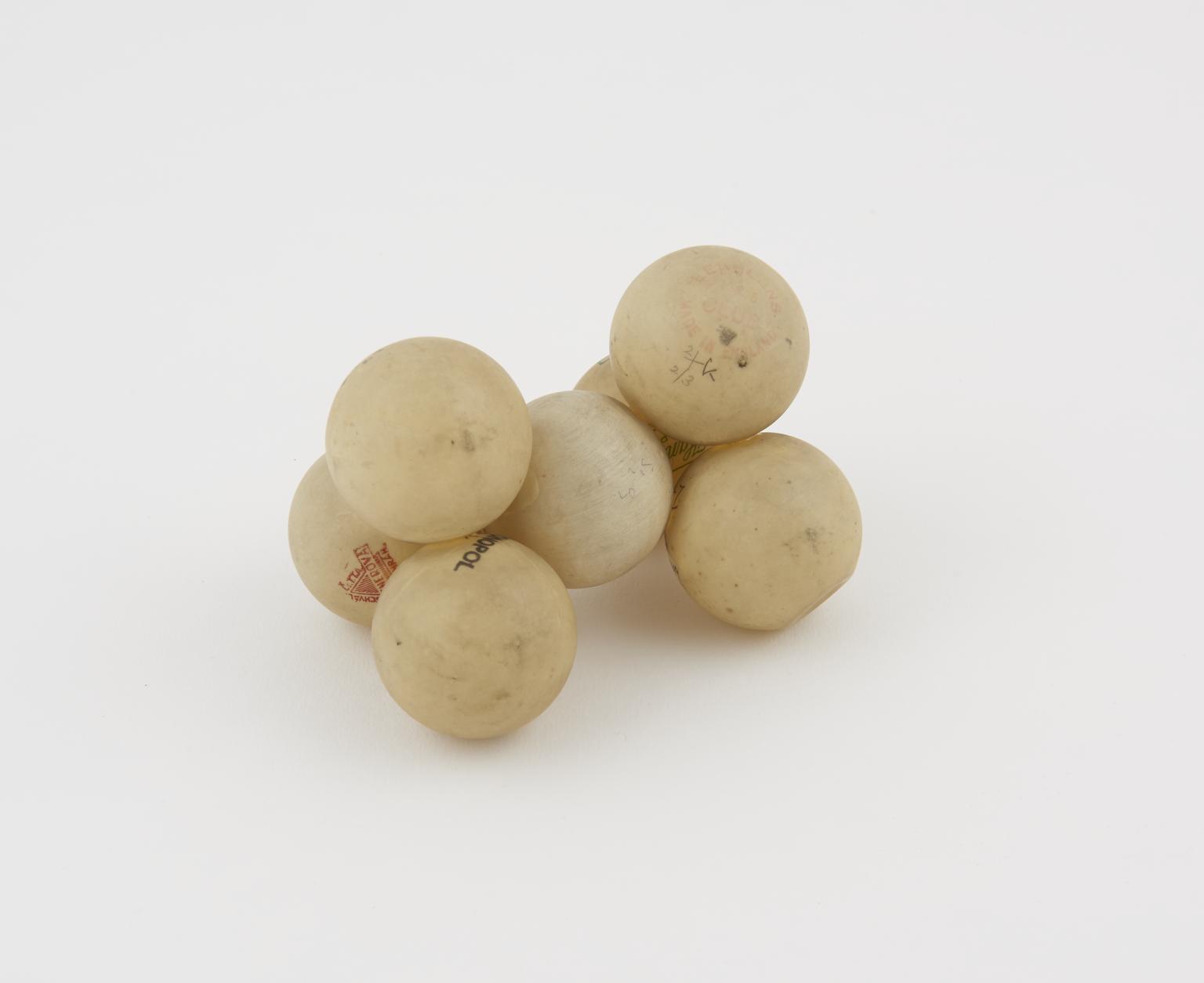
Teaching model made from ping pong balls showing silicate group, Si2 O7, made by Dame Kathleen Lonsdale, University College London, London, England, 1940-1950
Handwritten description for silicate group, Si2 O7, on x-ray film in 4 pieces, made by Dame Kathleen Lonsdale, University College London, London, England, 1940-1950
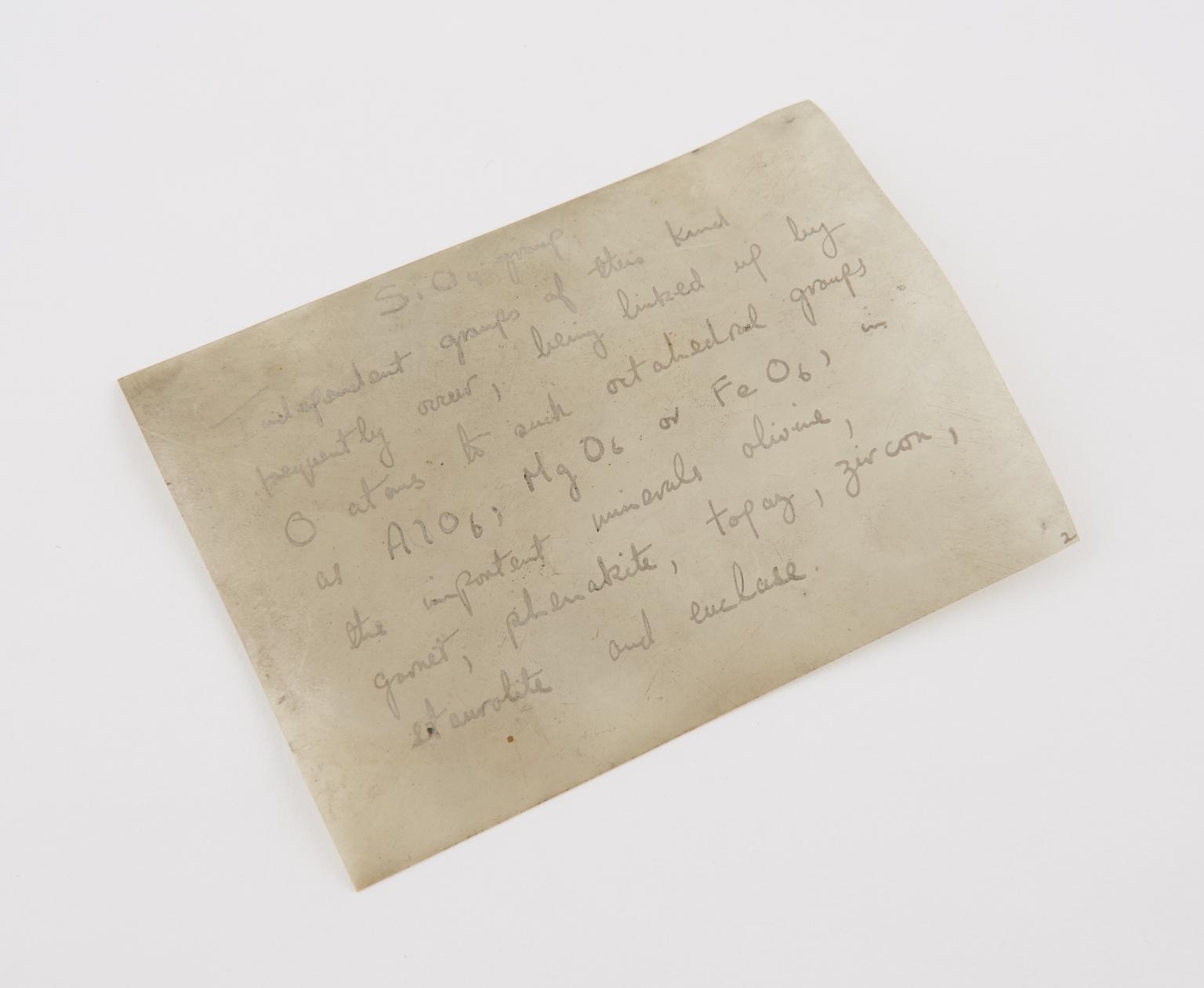
Handwritten description for silicate group, Si O4, on x-ray film, made by Dame Kathleen Lonsdale, University College London, London, England, 1940-1950
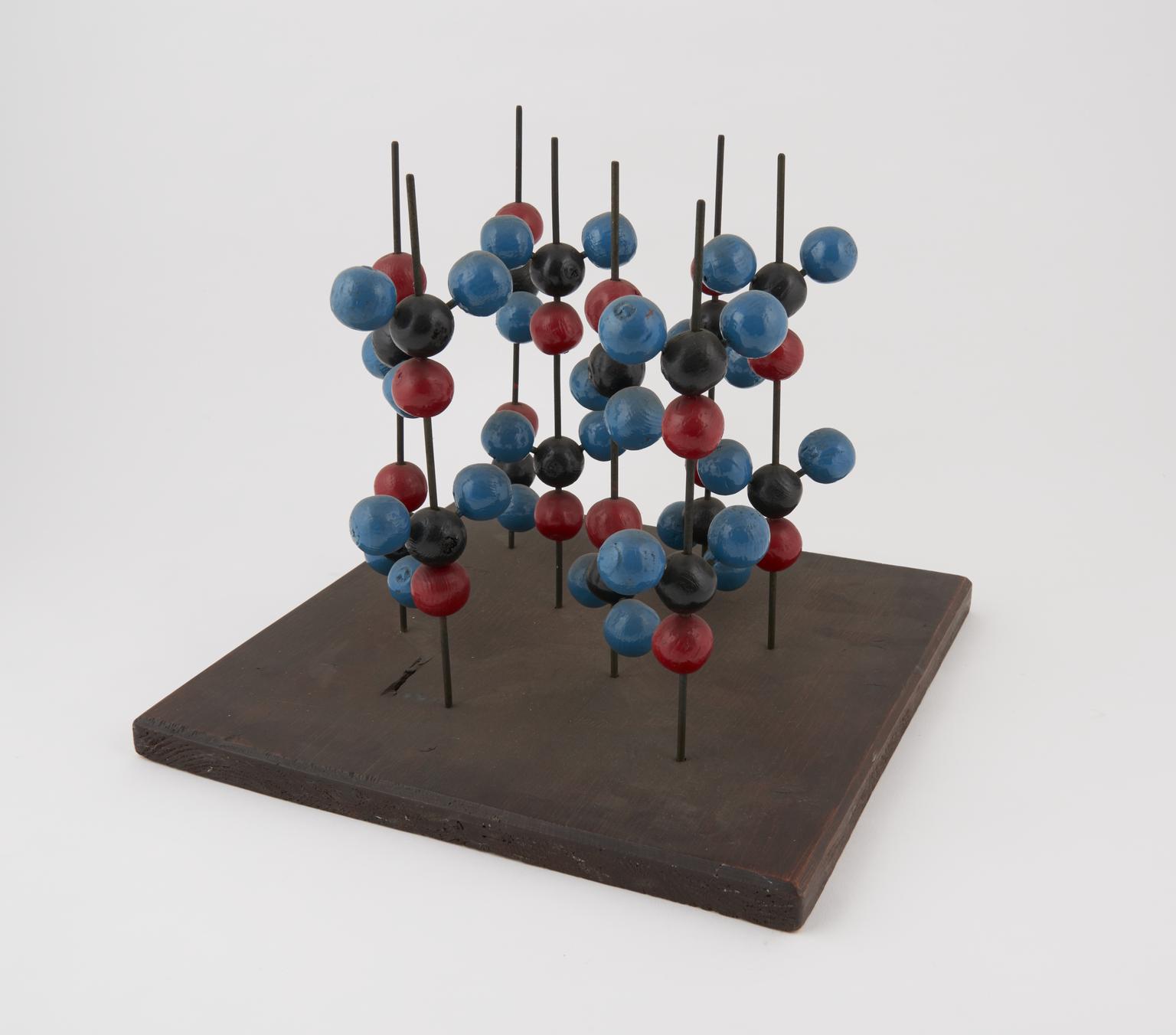
One crystal model of urea, made of red blue and black balls. From a collection relating to the X-ray crystallography research carried out by Dame Kathleen Lonsdale at University College London.

One crystal model of pentamethonium iodide. From a collection relating to the X-ray crystallography research carried out by Dame Kathleen Lonsdale at University College London.
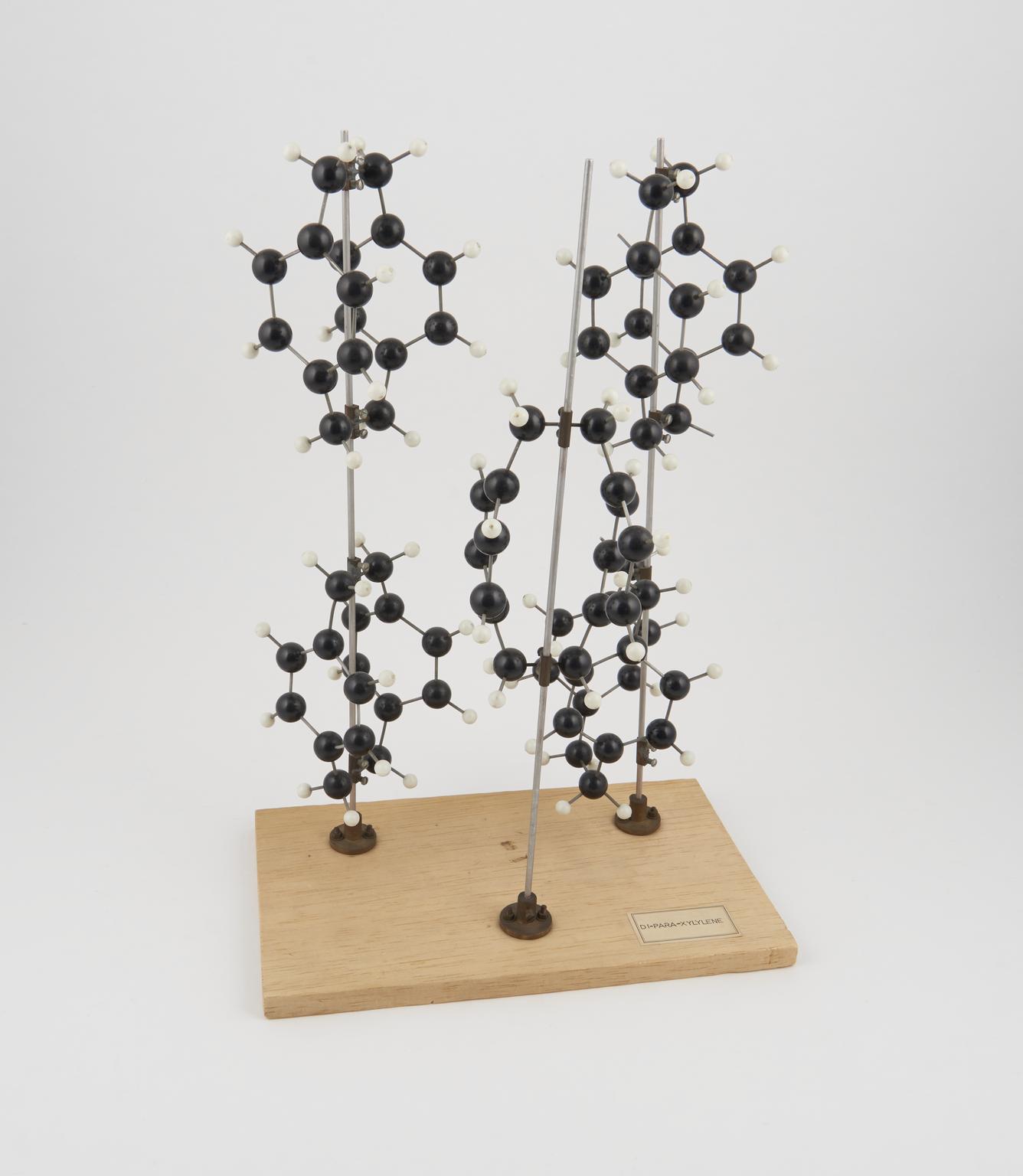
One crystal model of diparaxylylene. From a collection relating to the X-ray crystallography research carried out by Dame Kathleen Lonsdale at University College London.
One crystal model of hydroxylapatite. Associated with Kathleen Lonsdale's interest in stones produced with the human body e.g. kidney or gall stones. From a collection relating to the X-ray crystallography research carried out by Dame Kathleen Lonsdale at University College London.
This model belonged to pioneering X-ray crystallographer Kathleen Lonsdale and represents the crystal hydroxyapatite, an essential ingredient of bone and teeth. Coloured balls illustrate the atoms, connected by bonds shown as rods. Its three-dimensional form was deduced from a diffraction pattern, an image produced when X-rays bounce off a crystalline structure, leaving a telltale pattern of bright spots on a photographic plate. Models like this were used to communicate ideas about matter, revealing atomic structures at a scale far beyond what could then be seen with microscopes.

One crystal model of hexamethyl benzene, made for Kathleen Lonsdale. In 1928 she achieved her first major success in structure analysis as this was the first structure of an aromatic compound to be defined by X-ray diffraction. From a collection relating to the X-ray crystallography research carried out by Dame Kathleen Lonsdale at University College London.
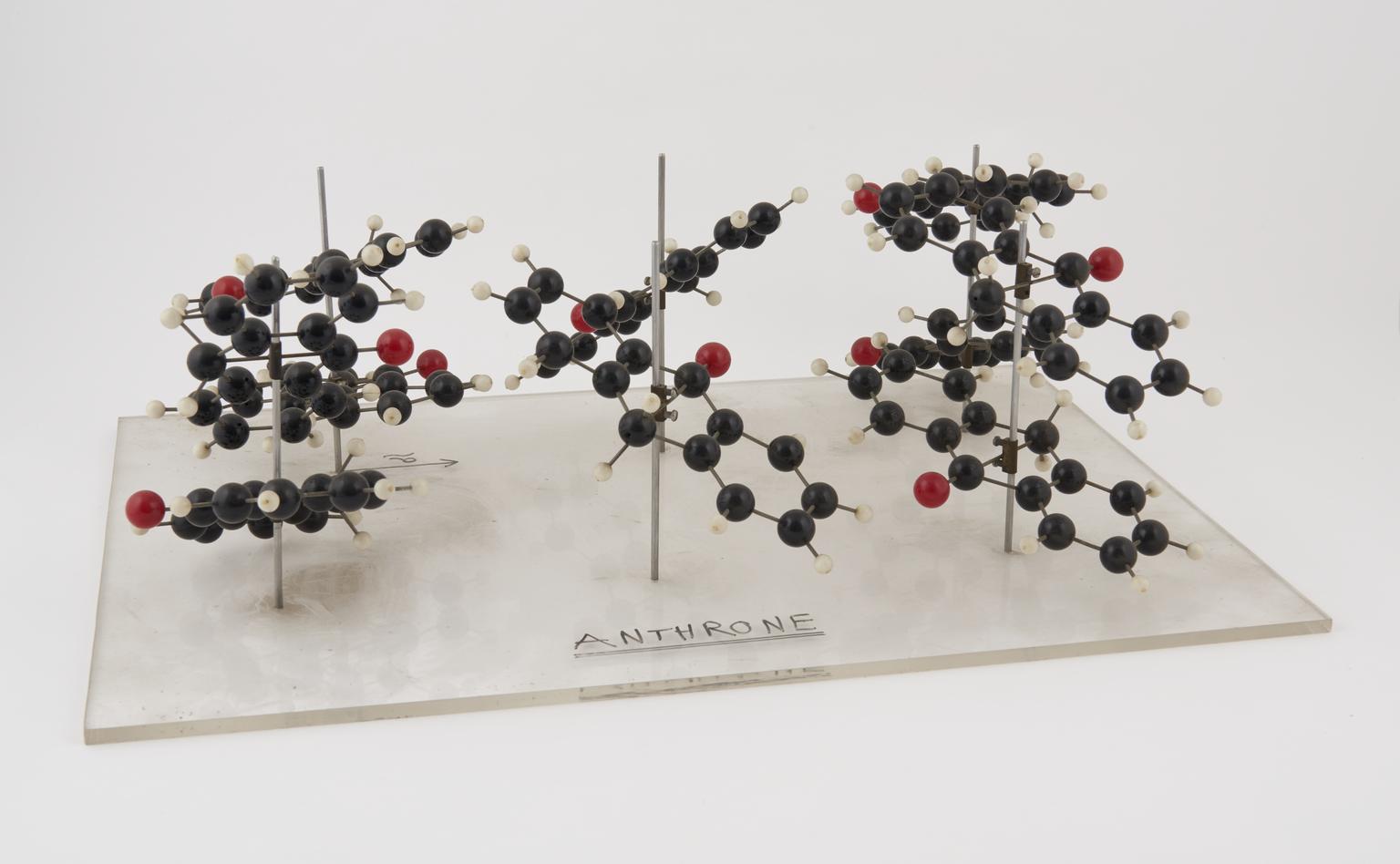
One crystal model of anthrone; used in conjunction with 1993-421/2/2 to demonstrate the transformation from anthroquinone (1 bar) to anthrone (not 1 bar), ends with members of different molecule system. From a collection relating to the X-ray crystallography research carried out by Dame Kathleen Lonsdale at University College London.
One crystal model of hexamethyltetramine. Associated with Kathleen Lonsdale's interest in stones produced with the human body e.g. kidney or gall stones. From a collection relating to the X-ray crystallography research carried out by Dame Kathleen Lonsdale at University College London.
One crystal model of Mg NH4 PO4 6H2O, magnesium ammonium phosphate. Associated with Kathleen Lonsdale's interest in stones produced with the human body e.g. kidney or gall stones. From a collection relating to the X-ray crystallography research carried out by Dame Kathleen Lonsdale at University College London.

One crystal model of bis 2, 7 dimethyl naphthalene, associated with Kathleen Lonsdale's work on diamagnetism. From a collection relating to the X-ray crystallography research carried out by Dame Kathleen Lonsdale at University College London.